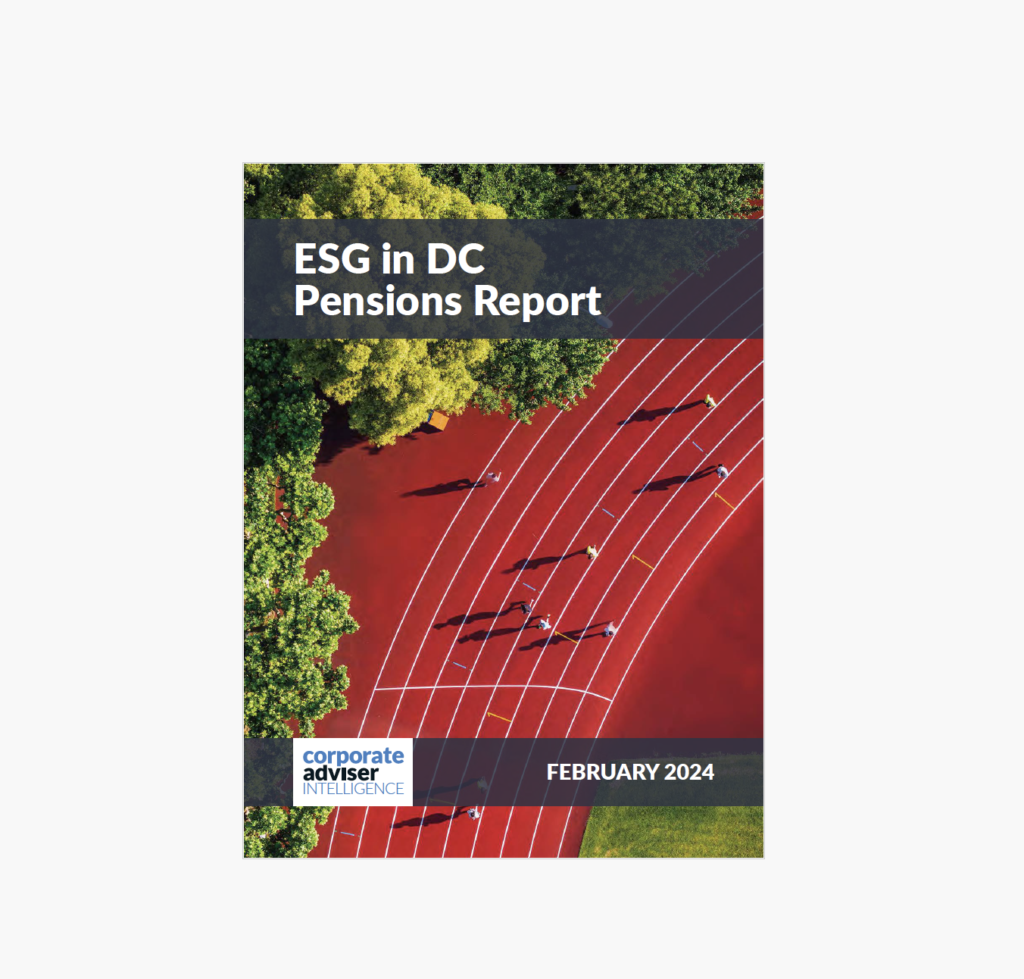Pension schemes are rapidly decarbonising — with seven out of 20 leading providers halving emissions in recent years, according to data from Corporate Advisers latest ESG in DC pensions report.
This sector-wide survey reveals for the first time the pension providers with the highest and lowest carbon footprint, according to their TCFD disclosures.
CLICK HERE TO REQUEST YOUR COPY OF CORPORATE ADVISER’S ESG IN DC PENSIONS REPORT 2024
National Pension Trust has the lowest carbon footprint of providers disclosing this data, at 23.4 tonnes of carbon dioxide emissions per £1m ( tCO2e/£m), following by Cushon at 29 tCO2e/£m and Aon at 37 tCO2e/£m.
At the other end of the scale SEI – which recently acquired NPT – has the highest disclosed carbon footprint at 108 tCO2e/£m.
This report reveals that across these 20 master trusts and GPPs the average carbon footprint is 61.1. tCO2e/£m.
Pension providers have to produce an annual TCFD report, but these do not necessarily cover the same time periods, with many of the higher figures disclosed for periods to the end of 2022, rather that more up-to-date disclosures covering periods into 2023.
This report is the only industry data that plots these carbon footprint figures against the time period covered, to give a fuller picture of decarbonisations trends across the workplace pension sector and enable better comparison between providers.
This report shows that a number of providers have significantly reduced emissions. Fidelity has halved its carbon footprint in the space of 12 months, while Smart Pension and Cushon have cut emissions by a third and a quarter respectively over a similar time frame.
The report shows that seven out of 20 providers have reduced the carbon emissions of their portfolio by at least 50 per cent from their benchmark year, indicating schemes are on track to hit 2030 interim net zero deadlines.
The report takes an in-depth look at the often complex area of carbon reporting, with a range of different measures now being used to indicate pension providers; and asset managers’ progress towards net zero goals.
It include data from leading asset managers operating in the DC pension sector as well as individual pension providers.
While all major DC workplace pension providers use carbon footprint metrics in their TCFD disclosures — alongside a range of forward-looking metrics — many asset managers use others calculations, such as the Weighted Average Carbon Index (WACI) figure or Carbon Intensity metric to calculate typical greenhouse gas emissions from their portfolios. This WACI figure shows the carbon intensity of the underlying investments, based on portfolio weights. It is calculated in relation to the revenue generated by these entities, rather than the investment value of the company itself.
Across the asset managers operating in the DC workplace pension market, WACI figures vary considerably, although there is a more narrow spread for asset managers that also disclose a carbon footprint figure.
The report also take a closer look at schemes’ sustainable and responsible investment strategies, by providing tales which show which defaults exclude or have reduced allocation to certain industries or sectors.
The report found that controversial weapons are the most widely excluded sector from default strategies, followed by companies involved in the produced or thermal tar sands and violators of the UN Global Compact.
For the first time the report looks at new ESG fund classifications, including the EU’s Article 8 and Article 9 funds, and the proportion of asset managers AUM invested in funds that meet these new sustainable classifications.
The report also takes an in-depth look at asset managers stewardship and engagement records, and tracks which providers and asset managers are members, or signatories to leading ESG bodies and standard setters.
